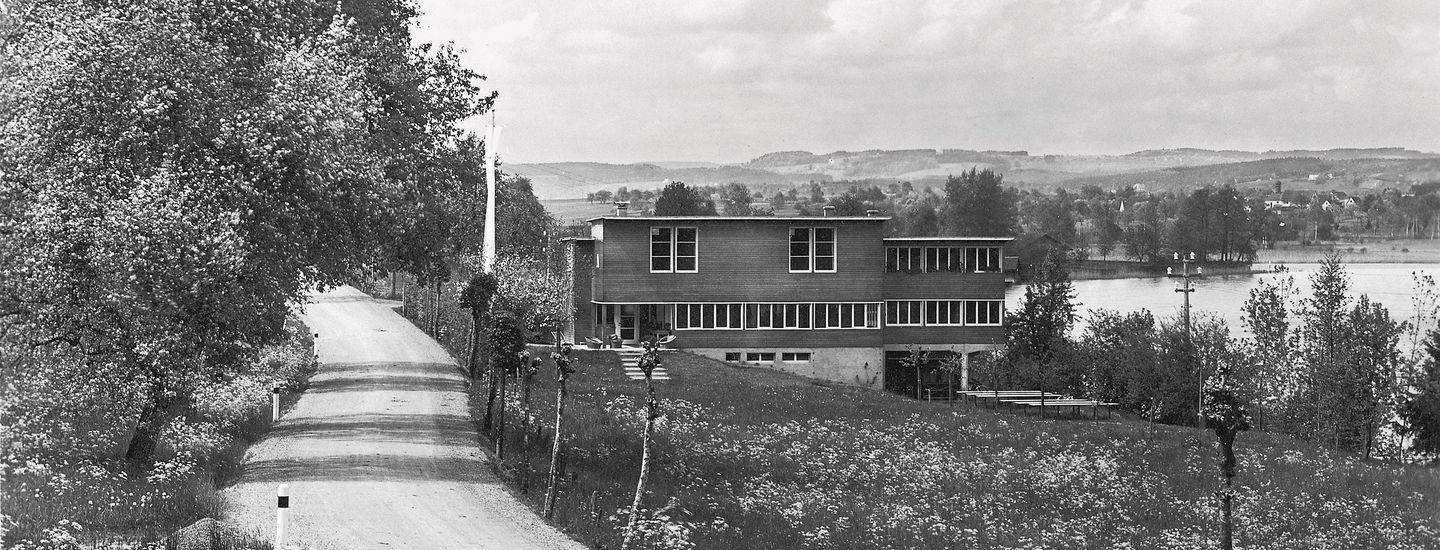
1990 to 1999
Restructuring and realignment
«There used to be more than 200 youth hostels in Switzerland. They were positioned in such a way that the hiking-loving young people could find accommodation wherever they ventured. But over the past eighty years, demand has changed – a fact that prompted us to develop a new network strategy. As a non-profit organisation, we cannot escape the laws of the market either.»[1]
Swiss-wide merger
Tourism has undergone noticeable changes, with the result that even the youth hostels are unable to adhere to traditional models. In order to embrace their own change, they develop a new mission statement in a participatory process. The result is «Jugi 2020», a report published in February 1992, which is compiled with the support of the Research Institute for Leisure and Tourism at the University of Bern.
The resulting marketing concept sets ambitious goals. The services should meet «high ethical, cultural and substantive quality standards». It is very important to continue to be able to offer value-for-money services. In order to endeavour to achieve the impossible, the company also wants to meet the increasingly high quality standards.
The focus is now on five goals. New locations must be situated in attractive tourist locations, there must be no competition with other youth hostels and it should be evident there is a public interest in each new building. The number of overnight stays to be expected must be at least 10,000 per year.
Each existing hostel is to be classified and six different types are proposed: transit hostels, romantic hostels, family hostels, sports and leisure hostels, seminar hostels and group hostels. The new buildings must also fit into these classifications and be constructed in accordance with ecological principles as far as possible. They must also be barrier-free. There are also renovation targets to ensure that the minimum quality standards are met at the outset. The employees are presented with many challenges when endeavouring to address all these goals effectively. In the spirit of the 1990s, they are encouraged through initiatives such as «competition-like events» and creativity seminars. With so many projects on the go, it is only fitting that a record number of overnight stays is reached in 1991, with 945,174 in total across the whole of Switzerland.
An important step in the implementation of the mission statement is the first stage of the merger in 1991, in which the districts of Zurich, North-Eastern Switzerland, Bern, Eastern Switzerland Neuchâtel and Vaud merge to form the Swiss Youth Hostels Association. Since 1994, there has been a central administration office in Zurich and everyone is aware that the infrastructures now urgently need to be adapted and brought up to date.
The Swiss Foundation for Social Tourism already had to consider what to do after the first merger of regional hostel associations with the 35 properties it suddenly had in its portfolio. The Bauhandbuch 2005 (Construction Manual 2005) – an architectural bible based on the values of the organisation’s mission statement «Jugi 2005» – defines smaller room units with more privacy through the use of ante areas, personal storage with bed lights, a bed linen concept and a modern locking system with 24-hour access. Payment can now also be made by credit card. There is a great need for renovation, but the money is (still) lacking.
In 1996, Fredi Gmür joins the Management Board of the Swiss Youth Hostels, commenting, «Tourism has changed dramatically in recent years. The main issues here are the globalisation of markets, changing competitive situations and new guest needs.»[2]
At the dawn of the new millennium, there is a mood of optimism. The red figures are slowly turning pink and the Swiss Youth Hostels are scaling back their operations to improve their financial health. Year after year, there are fewer locations and almost the same number of visitors. The youth hostels’ the new concept is also increasingly popular with local people. Under these circumstances, the association celebrates its 75th anniversary in 1999 with 75 sporting, cultural and social events at the youth hostels, discounts and special offers, and an anniversary edition of the association magazine, which has been called Ticket since 1986.






Share this page